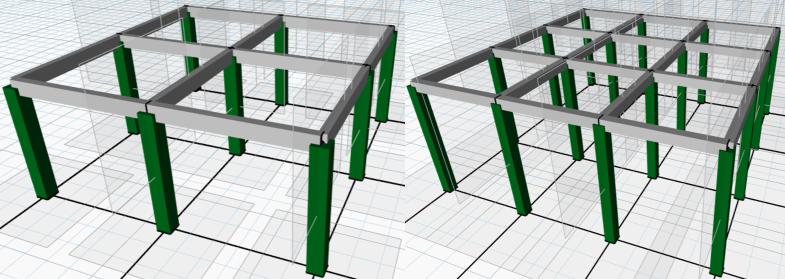1. Introduction
In the system of concrete office building, I aimed to analyze and compare various column and beam layouts within a building of consistent area for one floor. By employing different configurations of columns and beams while maintaining the same overall building area, my objective was to evaluate the total consumption of concrete and consequently assess the overall mass of the structure. The model allows for the modification of grid configurations, enabling adjustments to the spatial layout and arrangement of structural elements.
2. Modelling System with Dynamo
The sizes of columns dynamically adjust according to their respective tributary areas. Tributary area, or sometimes referred to as influence area, is the area surrounding the column that absorbs the load (Emil 2022). For the sizing of the beams, the formula which is stated in the Turkish regulations (TS 500) is used. Depth of the beams depends on the length of the beam by 0.1.
For making comparison between different layouts, consistent area is chosen as 12×12 meter. Two different layouts for the columns and beams are shown in Figure 1. The distances between columns are 6 meters and 4 meters respectively. The number of the columns and beams are dependent on the intersection points of the axis.

2.1 Calculation of the Total Volume and Mass
To observe total volume of concrete usage, the volumes of total columns and beams is calculated. After the calculation, the total volume is multiplied with the self-weight of the concrete which is 2,4 t/m3.
3. Conclusion
To sum up, in my pursuit of an optimal preliminary design, I sought to explore various column and beam layouts within a defined area, focusing on the efficient utilization of concrete. We can observe the impact of these configurations (grids spacing, sizing of the columns and beams) on the total volume of concrete required with this model.
Downloadable Content
Full Report: Oguzhan Erdal